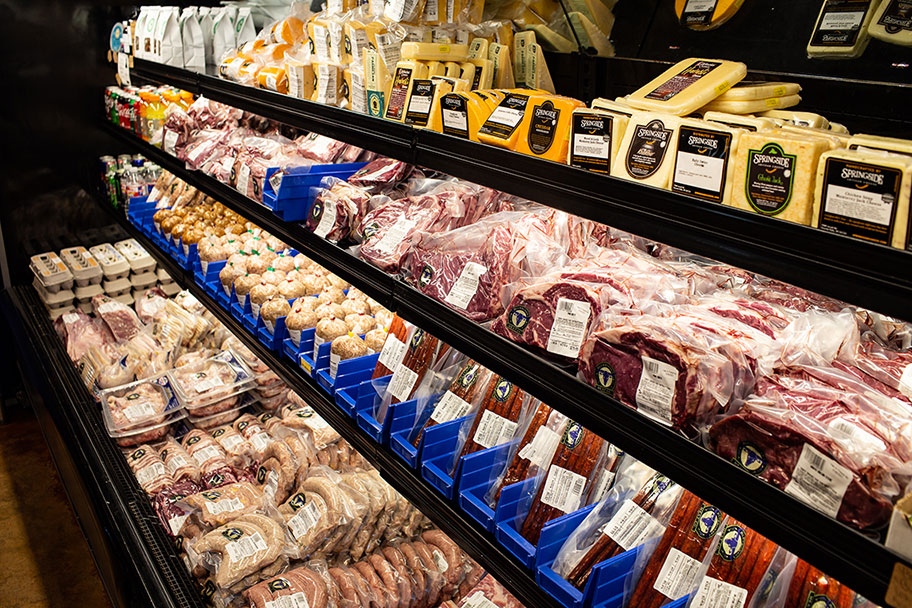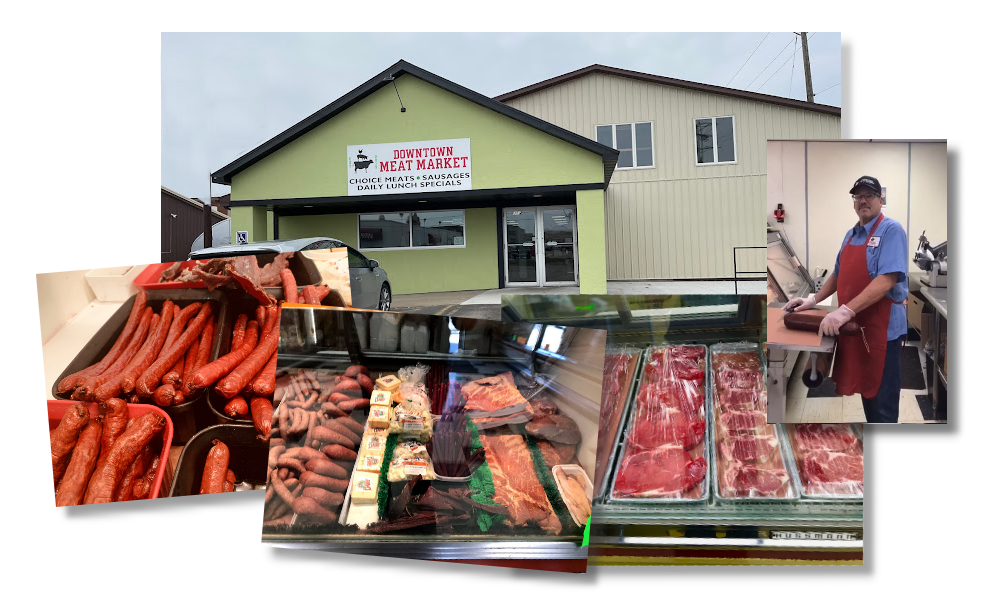Bagley Farms Meat Market Edwardsville IL: Your Go-To Destination for Local Meat Selection
Bagley Farms Meat Market Edwardsville IL: Your Go-To Destination for Local Meat Selection
Blog Article
Reveal the Art of the Butcher's Cut in a Modern Meat Market
In the ever-evolving landscape of modern meat markets, the butcher's cut has transcended its traditional origins, merging age-old workmanship with modern methods. Today's butchers are not simply processors of meat; they are well-informed artisans that highlight sustainability and honest sourcing. Their proficiency in selecting and preparing cuts customized to certain culinary needs offers an unrivaled dining experience. What really sets the modern-day butcher apart is their capability to forge a much deeper connection in between customers and the origins of their meat. Just how do these masters balance tradition with technology, and what ramifications does this have for the future of meat consumption?
Development of Butchery Techniques
The development of butchery techniques shows an abundant tapestry of development and adjustment driven by improvements in technology, modifications in customer demand, and a much deeper understanding of meat science. Historically, butchery was a craft passed down through generations, with techniques sharpened over centuries to maximize return and taste. Nevertheless, the commercial revolution introduced mechanization, transforming typical practices and allowing large processing.
The mid-20th century saw butchery strategies further refined by scientific understandings right into muscular tissue biology and meat aging, enhancing both tenderness and preference. Advancements like vacuum cleaner product packaging and refrigeration prolonged item shelf-life, enabling butchers to expand offerings and enhance quality control. This period additionally noted the rise of specialized equipment, such as band saws and meat slicers, which enhanced accuracy and effectiveness in meat handling.

Computerized systems currently help in tracking pet provenance and enhancing cuts to satisfy specific consumer preferences. Additionally, a rebirth in artisanal butchery has actually emerged, mixing standard skills with modern-day understanding to cater to customers seeking moral and lasting meat options.
Recognizing Meat Cuts
Comprehending the details of meat cuts is vital for both butchers and customers seeking high quality and worth. For butchers, precise cuts show ability and regard for the craft, ensuring very little waste and ideal return.

Comprehending muscle make-up is critical; muscular tissues utilized more regularly by the pet tend to be harder and are best fit for slow food preparation techniques, while less-used muscles, like those located in the loin, are much more tender and ideal for cooking or roasting. Experience with these distinctions encourages consumers to make enlightened options, boosting their cooking endeavors.
Picking Quality Meat
Picking the best meat includes even more than simply picking a visually enticing item from the display. The art of choosing high quality meat calls for a discerning eye and understanding of certain features that signify freshness and excellence.
Second of all, take into consideration the marbling, which refers to the white flecks of fat within the muscle mass. Appropriate marbling is a vital indication of more info here tenderness and flavor, as it melts during cooking, improving the meat's juiciness. Keep in mind, greater marbling usually correlates with premium quality cuts, such as USDA Prime.
Structure is one more important variable; meat needs to really feel firm to the touch, not slimed or overly soft. Additionally, bear in mind the scent. Fresh meat should have a tidy, neutral smell, complimentary from any type of sour or repulsive odors.
Matching Cuts With Food Preparation Methods

Conversely, tougher cuts like brisket and chuck roast are rich in collagen, which damages down right into jelly when cooked slowly. These cuts are suitable for braising or slow-moving roasting, allowing the meat to tenderize in time and establish deep, intricate tastes. Cuts such as short ribs and pork site here shoulder fare well with slow-cooking techniques, where prolonged cooking times transform their robust structures right into delicious recipes.
Lamb shanks and oxtail, which call for long term food preparation to soften, are perfect candidates for stewing or slow simmering. These techniques coax out rich, hearty flavors while preserving wetness. By comprehending the one-of-a-kind features of each cut, cooks and home chefs alike can boost their cooking developments, making certain each recipe is both pleasing and remarkable.
The Butcher's Function Today
Navigating the evolving landscape of the modern-day meat market, the butcher's role today expands beyond plain preparation of cuts. Contemporary butchers are cooking artisans, teachers, and supporters for sustainable practices.
Along with crafting specific cuts, butchers now engage directly with consumers, providing cooking guidance and tailoring options to fit specific needs and choices. Their know-how in meat aging, marbling, and flavor profiles encourages consumers to make informed choices, boosting their culinary experiences. This individualized solution exemplifies the butcher's developing duty as a relied on advisor in the kitchen area.
In addition, butchers are critical in lessening waste, making use of whole animals to produce diverse items such as sausages and supplies. This thorough method not only appreciates the pet yet additionally aligns with contemporary sustainability goals. By doing this, the modern-day butcher personifies both practice and innovation, adapting to an ever-changing market while protecting the creativity and stability of their craft.
Final Thought
The modern butcher's craft delicately weaves traditional techniques with modern innovations, emphasizing sustainable practices and ethical sourcing. Mastery in understanding diverse meat cuts and quality indicators empowers butchers to provide informed referrals, lining up particular cuts with ideal cooking look at here now methods. This knowledge not only elevates cooking experiences yet additionally enhances the connection between consumers and the beginnings of their food. By recognizing historical practices while embracing modern needs, the butcher's role remains vital in today's innovative meat market (bagley farms meat market edwardsville il).
Report this page